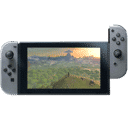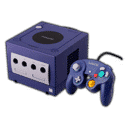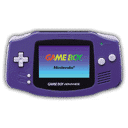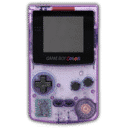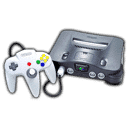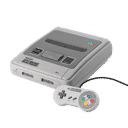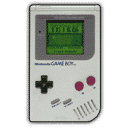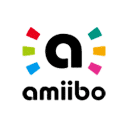
Summary:
Pokemon GOITA is the latest way The Pokemon Company is inviting fans to gather around a table instead of a TV or handheld. Inspired by the traditional Japanese board game Goita, this new spin keeps the original’s four-player, team-based structure but swaps wooden tiles for bright pieces featuring Pikachu, Mewtwo, Charizard and more. Launching in Japan on December 18, 2025, Pokemon GOITA arrives as a physical board game alongside a mobile version designed to teach the rules and ease people into their first matches. That pairing is clever: the board on your table provides the social spark, while the app quietly does the heavy lifting on instruction in the background. Here we walk through what Pokemon GOITA actually is, how classic Goita works, how this Pokemon-flavored version plays, what comes in the box, and why the companion mobile version matters. We also touch on who this game suits best, how to import it if you live outside Japan, and why it might be worth keeping an eye on if you love both Pokemon and traditional tabletop experiences.
What is Pokemon GOITA?
Pokemon GOITA is a new tabletop experience that blends one of Japan’s lesser-known traditional games with some of the most recognizable creatures on the planet. Rather than rolling dice or moving miniatures across a map, players handle sturdy tiles that look a little like oversized trading cards, each one emblazoned with a specific Pokemon and a point value. The game is always played with four players split into two teams, and partners sit across from each other so they can coordinate without saying a word. The core idea is simple but addictive: you try to be the first team to hit a target score by playing out all your tiles in smart attack and defense combinations. Because matches are quick and turn flow is straightforward once you’ve seen a few rounds, Pokemon GOITA aims squarely at families, casual players and long-time fans who want something that feels both classic and fresh at the same time.

Key facts: release date, price and platforms
Pokemon GOITA launches in Japan on December 18, 2025, just in time for holiday gatherings where a compact, easy-to-learn game can hit the table again and again. In stores, the box is priced at 2,970 yen, putting it in the same ballpark as many mid-range family games rather than premium collector’s sets that break the bank. The release isn’t limited to cardboard either: a mobile version arrives alongside the physical edition, functioning as both a teaching tool and a way to see the flow of play before you sit down with friends. That combo is especially handy if you’re importing the game and might not be fluent in Japanese, since the app visually demonstrates what each move looks like. Right now, the physical version is officially announced only for Japan, but some import-friendly shops have already started to list it, giving international Pokemon fans a realistic path to getting a copy even without a worldwide rollout.
How the traditional board game GOITA works
To really appreciate what Pokemon GOITA is doing, it helps to understand the traditional game it’s based on. Goita originated in Noto, Ishikawa, and uses 32 tiles or cards that resemble shogi pieces in shape and layout. Each tile represents a role, such as king, rook, bishop, gold, silver, knight, lance or pawn, with different point values attached. Four players sit around the table in teams of two, with partners sitting opposite each other. Everyone receives a hand of eight tiles, and on each turn a player chooses an attack tile to place face up and a defense tile to keep face down, setting a rhythm where the next player tries to match or counter what was just played. The aim is to be the first team to reach a set point total, usually 150 points, by winning rounds and using tile combinations well. Because you can see what your partner plays but cannot openly coordinate, there’s a subtle layer of communication and trust that makes good teams feel almost psychic once they click.
Why Pokemon is a natural fit for GOITA’s structure
On paper, the idea of pairing a century-old Japanese tile game with Pokemon might sound unexpected, but the structure of Goita almost begs for character-driven flair. Each tile already has a defined role and value, just like a party of Pokemon in a battle team, where certain members hit hard and others provide key support. By assigning specific Pokemon to each tile type, The Pokemon Company turns abstract symbols into familiar faces and gives players instant emotional hooks. It’s easier to remember that Mew and Mewtwo represent the powerful king tiles than to memorize kanji characters on plain wood, especially for newer or younger players. At the same time, teams of two echo the feeling of battling alongside a friend in a co-op raid or double battle online. Instead of crunching numbers on a screen, you’re reading your partner’s plays and trying to guess when they’re holding back a crucial tile for a big swing.
What stays the same in Pokemon GOITA’s rules
Despite the fresh coat of Pokemon paint, the underlying rhythm of the game remains loyal to traditional Goita. Four players still face off in two-versus-two matches, and the core goal is unchanged: be the first team to reach or exceed 150 points by winning hands. Each turn still revolves around choosing an attack and a defense tile, with the next player deciding whether to respond by matching the attack or passing and forcing momentum to shift. The point structure also mirrors the original, simply translated into Pokemon terms: lower-value tiles fill the role of pawns and support pieces, while heavy hitters like Charizard, Dragonite, Mew and Mewtwo stand in for rooks, bishops and kings. Because the skeleton of the rules remains intact, Goita veterans can jump into Pokemon GOITA almost instantly, while newcomers get the benefit of a time-tested design that has been refined over decades of casual and club play in Japan.
Tiles, art style and what comes in the box
The first thing you notice when you crack open the Pokemon GOITA box is how much personality The Pokemon Company has squeezed into a relatively compact package. The tiles are tall, chunky pieces with clean, modern artwork that highlights each featured Pokemon against a minimalist backdrop. Point values are clearly printed alongside role names, so even if you’re not entirely sure what a knight or lance means in traditional terms, you can still immediately see how valuable a given tile is during play. The set covers eight different Pokemon types within the tile lineup, from lower-value creatures representing pawns and minor roles up to high-scoring legends anchoring the top end. In addition to the tiles themselves, you can expect score markers or reference materials that help track progress toward the 150-point goal and remind newcomers how each role fits into the wider system. It’s the kind of production that feels sturdy enough for kids while still satisfying fans who like their collectibles to look good on a shelf.
Learning the game through the companion mobile version
The mobile version launching alongside the board game might be one of Pokemon GOITA’s smartest decisions. Traditional games like Goita can be tricky to pick up if you’re relying solely on printed rules, especially when they assume a little cultural context or prior experience with similar titles. By building a mobile experience that walks you through basic moves, tile interactions and scoring, The Pokemon Company lowers the barrier to entry dramatically. You can watch an animated demonstration of an attack and defense exchange, tap through examples of winning hands, and preview how a full round plays out before teaching friends at the table. For players outside Japan, the app also acts as a bridge when they’re dealing with Japanese-only printed instructions, since visuals often explain more than text ever could. Even if you never intend to play full matches on a phone, using the app as a living rulebook should make your first real-world session faster, smoother and less intimidating for everyone involved.
Who Pokemon GOITA is best suited for
Pokemon GOITA naturally appeals to long-time Pokemon followers who enjoy seeing the brand experiment beyond video games and trading cards, but its sweet spot is wider than that. Because matches are short and the rules boil down to simple choices—play, defend, or pass—it works well for families who want something quick between dinner and bedtime. The four-player, team-based nature also makes it a charming choice for couples or friends who like the feeling of quietly coordinating against another pair at the table. If you’re into modern board games, Pokemon GOITA sits closer to classic trick-taking or partnership-based titles than complex strategy epics, giving you a lighter option that still rewards reading opponents and counting tiles. For people curious about traditional Japanese games but not ready to learn shogi or go from scratch, it offers an approachable doorway, wrapping a piece of cultural history in familiar characters and a playful presentation.
Importing Pokemon GOITA outside Japan: practical tips
Right now, Pokemon GOITA has only been announced for release in Japan, so if you live elsewhere you’ll probably need to import it. Thankfully, this is less daunting than it used to be. Several online retailers that specialize in Japanese games and merchandise already list the title, and many of them ship worldwide with clear estimates on shipping time and customs considerations. Before you order, it’s worth checking whether the store provides English-language product pages so you can confirm what’s included and verify you’re getting the official version rather than a knockoff. Because the box relies heavily on symbols and numeric point values, language isn’t a huge barrier once you’ve learned the rules, especially if you use the mobile version as a tutorial. Budget for shipping costs on top of the 2,970 yen price tag and consider pairing your order with other items to spread that fee across multiple goodies. If you’re patient and plan ahead, getting Pokemon GOITA delivered abroad should be quite manageable.
Where Pokemon GOITA fits in Pokemon’s tabletop lineup
Pokemon GOITA is part of a broader push to keep the brand thriving away from screens, right alongside longstanding pillars like the Pokemon Trading Card Game and one-off collaborations with classic board games. In the past, we’ve seen Pokemon-themed versions of well-known tabletop titles and smaller puzzle-style offerings, but GOITA stands out because it draws on a specifically Japanese tradition rather than an international hit. That gives The Pokemon Company a chance to highlight local culture while also offering fans something that doesn’t feel like a simple reskin. For collectors, it becomes a snapshot of a particular moment in Pokemon’s merchandising history, sitting alongside plush lines and limited-edition figures. For players, it demonstrates that the franchise is willing to explore mechanics that aren’t strictly about battling or collecting, focusing instead on teamwork, timing and subtle communication. As Pokemon continues to expand into films, theme parks and more, projects like GOITA help keep the tabletop side of the brand surprising.
Is Pokemon GOITA worth watching if you love Pokemon?
If you already adore Pokemon and enjoy any kind of tabletop play, Pokemon GOITA is absolutely worth keeping on your radar. It isn’t a sprawling strategy epic or a heavy-duty hobby game, but that’s part of its charm: this is a compact, approachable box that can hit the table with almost any group willing to learn something new. The combination of quick turns, team play and recognizable faces makes it an easy sell to friends who might usually shy away from learning a “traditional” game. The December 18, 2025 release date means it’s landing squarely in the holiday window, so it could become a go-to choice for gatherings if you manage to import a copy in time. Even if you never master every nuance of tile counting, you’re still getting a neat crossover between cultural history and modern fandom, along with a collectible that looks great next to your games, cards and figures. For many fans, that blend of play value and display value will be more than enough.
Conclusion
Pokemon GOITA takes a traditional Japanese partnership game and wraps it in the warmth and familiarity of Pokemon, creating something that feels both respectful of its roots and welcoming to newcomers. By keeping the four-player, two-versus-two format and the race to 150 points, the design preserves the heartbeat of Goita while using bold art and clear point values to make every tile feel special. The decision to launch a mobile version alongside the physical box shows real awareness of how people actually learn games today, turning phones into friendly tutors rather than distractions. For players outside Japan, importing might take a bit of planning, but the language-light components, digital teaching tools and reasonable price make that effort more approachable than it first appears. Whether you’re a collector chasing every new Pokemon experiment or a board game fan curious about Japanese classics, Pokemon GOITA offers a fresh way to share a table with friends, swap knowing smiles with a teammate and see familiar monsters in a whole new strategic light.
FAQs
- What exactly is Pokemon GOITA?
- Pokemon GOITA is a four-player, team-based tabletop game that reimagines the traditional Japanese tile game Goita with Pokemon characters on the tiles. Players form two teams of two and try to reach a target score by playing attack and defense tiles in clever combinations, using familiar Pokemon faces to represent classic roles like pawns, knights, rooks and kings.
- When does Pokemon GOITA release and where?
- Pokemon GOITA is scheduled to release in Japan on December 18, 2025. At launch it will be sold as a physical board game within Japan, with no confirmed plans yet for a localized international edition. However, several import-friendly retailers are already listing the game, so interested players abroad can still secure a copy through online orders that ship worldwide.
- How many players does Pokemon GOITA support?
- Pokemon GOITA is designed specifically for four players and always uses a two-versus-two format, with partners seated opposite each other at the table. That structure reinforces teamwork and silent coordination, since you learn to read your partner’s choices and respond without needing to spell out every move. It’s not meant for solo or two-player sessions, so you’ll want a full group to enjoy it as intended.
- Do I need to know Japanese to play Pokemon GOITA?
- Knowing Japanese helps when reading the printed rules, but it’s not strictly necessary to enjoy the game once you understand the basics. Tile roles and point values are clearly displayed, often with recognizable Pokemon art that makes each piece easy to identify. The companion mobile version, along with fan-made translations that are likely to surface, should make it much easier for non-Japanese speakers to learn how turns work and how scoring is calculated.
- Is there an English or digital version of Pokemon GOITA?
- At the moment, Pokemon GOITA has only been announced as a physical board game releasing in Japan, accompanied by a mobile version that serves as a teaching and practice tool. There has been no official word on an English-language print run or a fully digital standalone adaptation beyond the educational app. That could change in the future if demand proves strong, but for now fans interested in playing will probably rely on imports and the mobile helper.
Sources
- Pokemon GOITA Board Game Announced For Japan, NintendoSoup, November 14, 2025
- Pokémon GOITA board game announced for Japan, GoNintendo, November 14, 2025
- Pokemon Goita Board Game Debuts in Japan in December, Siliconera, November 14, 2025
- Video: The Pokémon Company reveals new board game called Pokémon Goita – releasing December 18 in Japan, Pokémon Blog, November 14, 2025
- Goita, Wikipedia, last updated September 7, 2025


